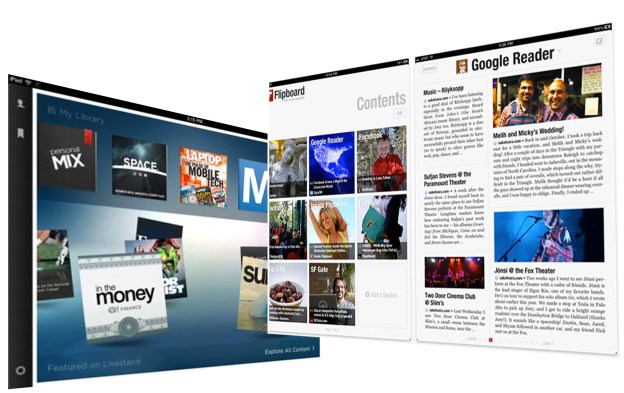 Yesterday Yahoo introduced its Flipboard competitor Livestand. The news aggregation app dutifully pulls content from a variety of sources to offer a magazine-type experience on your iPad. But how does it actually measure up?
Yesterday Yahoo introduced its Flipboard competitor Livestand. The news aggregation app dutifully pulls content from a variety of sources to offer a magazine-type experience on your iPad. But how does it actually measure up?
Sign-up and sign-in
On Livestand, you’ll immediately see designated spots for new users. Here you can choose to sign-in with either your Yahoo or Facebook account, or forgo that step entirely.

However the lack of personal information it allows you to pull is extremely lacking. It grabs your name, gender (if provided), and image from your Facebook or Yahoo account—and that’s about it. Flipboard, on the other hand, lets you link a variety of Websites and uses them to personalize your page.
From there, Livestand directs you toward content. You can either explore the featured news or the entire collection. Bookmarking and adding to your personal mix is easy, although not as quick as you might like (we watched that spinning wheel more than we wanted to).
Content collections

There is no option for viewing your Twitter or Facebook feeds as news stories, something that Flipboard has done so well and a major reason why it’s become the magazine app to contend with. This omission by Livestand is a bit bewildering.
And while there are plenty of sites to pull from and we didn’t necessarily feel limited, there isn’t the seemingly-infinite library that Flipboard provides. There is not an option for searching and selecting your own sources, and you’re pigeon-holed within whatever publications Yahoo has partnered with.
User interface and design
Part of Flipboard’s allure is that it somehow finds this ideal middle ground between old-school, tangible magazines and newspapers and touchscreen technology. The actual method of flipping through your selected content is a nice, comfortable translation from paper to screen.
That’s not to say that Livestand’s more blocky UI is bad—we just happen to better appreciate Flipboard’s design choice.

Within the “personal mix” tab is your curated content, which you can view by subject or everything culminated together. Unfortunately, the design leaves something to be desired (see the image below). The rest of Livestand (the featured publications and other standalone news apps included in the catalog) are quite stunning: Big, interactive images, sleek formatting, and attention to details like typeface and integrated Twitter feeds. But within your actual, self-created zine is nothing more than plainly formatted text. It isn’t enticing to look at or particularly attention-grabbing. Add to all this that Livestand can’t be viewed in portrait mode: You’re stuck in landscape.



